Let's talk Samoyeds
With their Siberian heritage and working dog background, the good-natured Samoyed exudes strength, stamina, and enviable self-assuredness. Samoyeds are rarely reserved with strangers, which makes them ill-suited as guard dogs but fantastic companions. Intelligent and somewhat mischievous, the Samoyed requires an owner with experience who will be able to assert themselves as the “alpha” of the household. Another essential: someone able to spend a lot of time with them walking, running, and playing to satisfy their ample exercise needs and playful spirit.
Official name: Samoyed
Origins: Russia
Samoyed Dog Food
Drooling tendencies
2 out of 5Shedding Level
4 out of 5Energy level (high, low, medium)*
3 out of 5Compatibility with other pets
4 out of 5Warm weather?
1 out of 5Suited to apartment living
2 out of 5Family pet?*
4 out of 5Can stay alone
1 out of 5
| Male | Female |
|---|---|
| Height | Height |
| 53 - 60 cm | 48 - 53 cm |
| Weight | Weight |
| 20 - 30 kg | 15.8 - 23 kg |
| Life Stage | |
|---|---|
| Adult | |
| 1 year to 7 years | |
| Mature | Senior |
| 7 years to 10 years | From 10 years |
| Baby | |
| Birth to 2 months | |
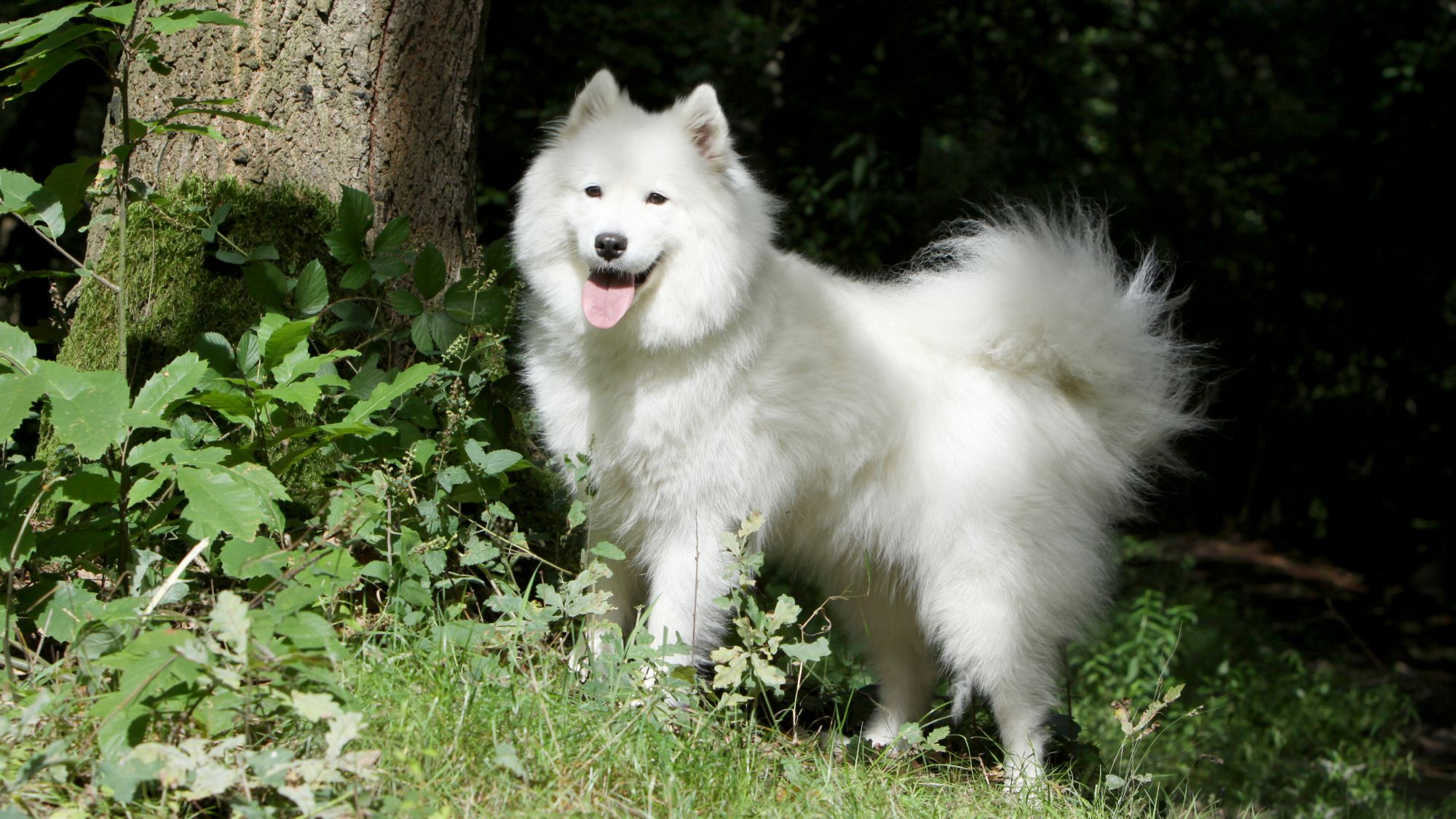
Get to know the Samoyed
All you need to know about the breed
What’s not to love about the Samoyed? The breed’s bright and distinctive expression resembling a smile, thick snowy white coat, and playful personality have made them a favourite among families with young children. The nomadic breed may have once been accustomed to long-hauls through the arctic but today, it gets their kicks from jauntily running, strolling, and playing with you (even better when that includes getting to pull the occasional sled!).
Highly social, good-humoured, and full of energy, the Samoyed is an ideal companion for experienced dog owners. They need someone with the time to devote to them and the space at home for their activity needs. Intelligent with a stubborn streak, the breed requires a tough but patient (and loving) guide for training and responds well to food or game-based rewards (however, treats should always be taken out of a dog’s daily food portion to prevent obesity).
Whilst barking outbursts and trouble-making antics are infrequent, they do happen. And if they do, you’ll want to ask yourself: Was my Sammie, as they’re nicknamed, left alone for too long? Were they bored? The breed is independent to a degree but thrives in your company and when mentally stimulated by games.
As for maintaining that all abundant, beautiful fur: It does require regular care. Consider brushing your Samoyed on a daily basis as another form of bonding—it’s good for you both!
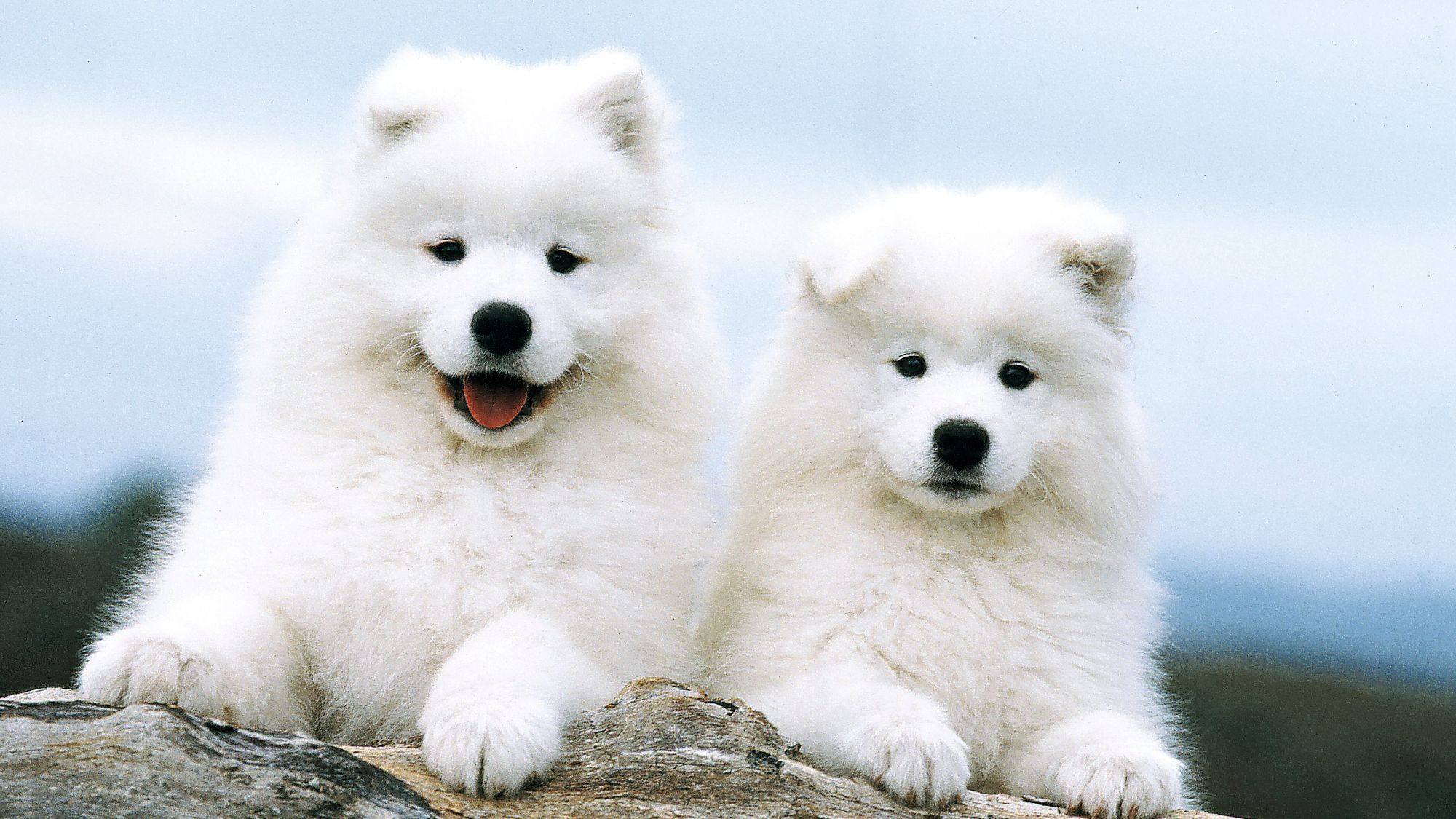
2 facts about Samoyeds
1. Temperature-control fur
The Samoyed’s dense double coat seems like it would be better suited to extreme cold but it actually allows the breed to adapt to temperature variations. Think of the fur as a layer of insulation that retains the Samoyed’s body heat in the cold. The same insulating properties that keep the Samoyed warm are what keep them cool--so don’t even think about shaving their luxurious mane!
2. The Samoyed smile
If ever there was a breed to be known for its facial expression it is the Samoyed whose mouth, which curves slightly at the corners, forms what is widely known as the Samoyed (or Sammie) smile. But the breed’s defining expression goes beyond the mouth: it is conveyed by the shape and position of their eyes (which tend to sparkle) and the way their faces become animated when alert or excited.
History of the breed
Among the world’s oldest dog breeds, the Samoyed gets its name from the indigenous and nomadic Samoyedic people of northern Russia and Siberia who bred the dog to pull sleds, herd reindeer and protect them against predators. When they weren’t sledging through arctic climates, Samoyeds could be found following their owners everywhere and providing the tribe warmth on cold nights as they slept in tents.
Much later, the breed earned the attention of Queen Alexandra of Denmark who received one of the first Samoyeds imported to England in 1889. It wasn’t until 1906, however, that the Samoyed landed in America when the Russian Grand Duke Nicholas offered a Samoyed named Moustan of Argentaeu as a gift to the nation (who also happened to be the first Samoyed registered with the American Kennel Club).
By the time the breed became a fixture in the U.S. and Europe, their outdoor role had shifted to hauling supplies. Samoyeds’ great strength and adaptability to cold and hard conditions made them the perfect companions for polar expeditions such as those led by Shackleton, Scott, and Amundsen—the first team to reach the South Pole. Their loyalty, combined with that snuggling reputation, has remained an enduring characteristic of the breed’s modern popularity.
From head to tail
Physical characteristics of Samoyeds
1.Head
2.Colouring
3.Coat
4.Ears
5.Tail
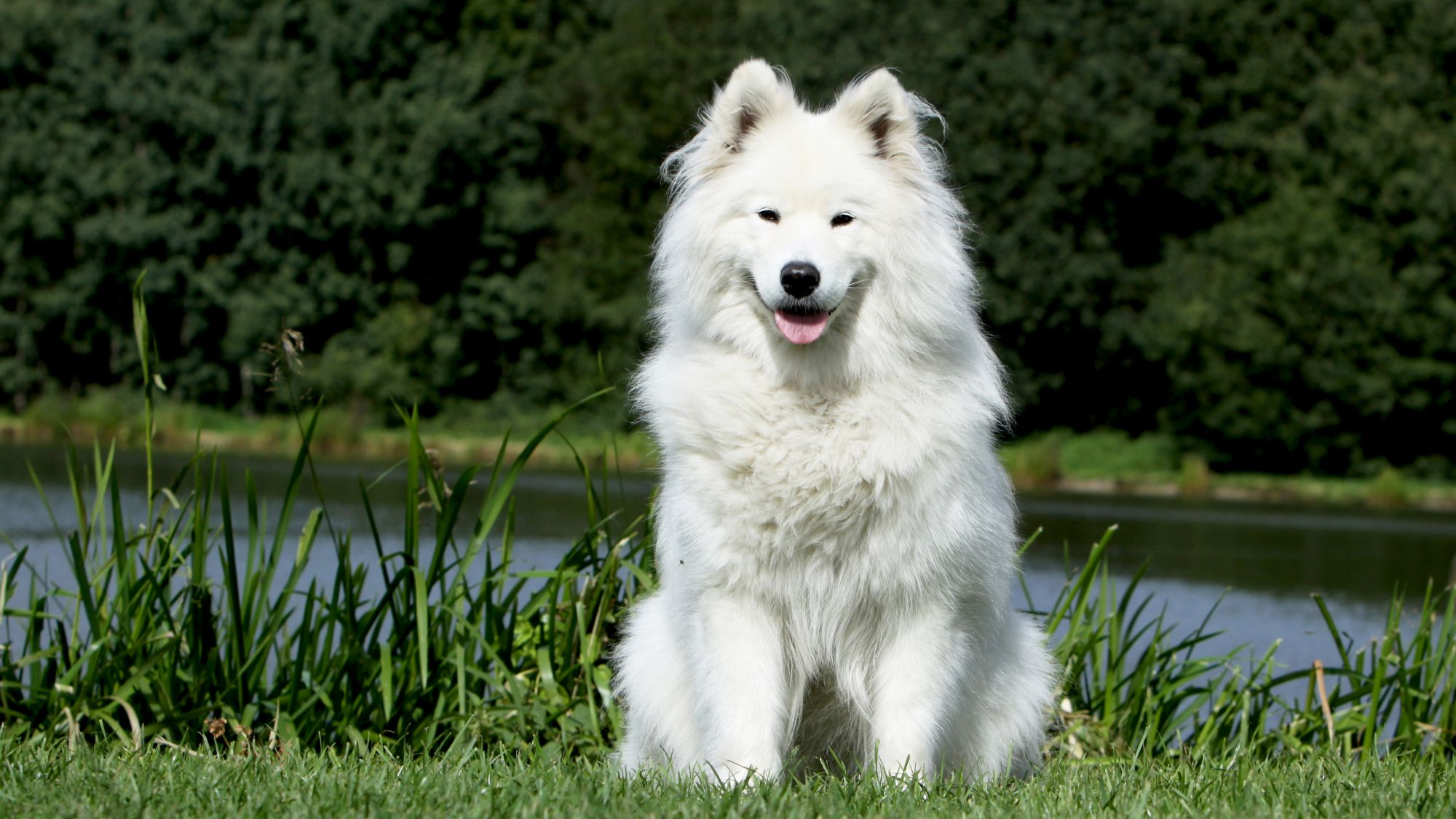
Things to look out for
From specific breed traits to a general health overview, here are some interesting facts about your Samoyed
Independent but only to a point
The Samoyed has an undeniably appealing personality: easy-going, quick to form strong bonds with their family, and partial to lots of affection and attention. The breed also has an independent side but only to a point. If left to entertain themselves for too long, indoors or outdoors, Samoyeds are likely to become bored and resort to digging, howling, and miscellaneous forms of mischief. When in doubt, allow for EXTRA quality time for you and your Samoyed!
A lot of fur or extra weight?
Don’t be misled by the Samoyed’s thick coat: that fur may not only be fluffy but could actually be masking extra pounds. While the breed generally maintains a healthy weight, some dogs are prone to becoming overweight (especially since the Samoyed is food-motivated). It’s important to check them regularly, using your hands to feel their bodies, and speak to your vet to determine if adjustments need to be made to the dog’s diet or exercise levels.
Healthy diet, healthier dog

When choosing food for a Samoyed, there are many factors to consider: Their age, lifestyle, activity level, physiological condition, and health including potential sickness or sensitivities. Food provides energy to cover a dog’s vital functions, and a complete nutritional formula should contain an adjusted balance of nutrients to avoid any deficiency or excess in their diet, both of which could have adverse effects on the dog.
Clean and fresh water should be available at all times to support good urinary regularity. In hot weather and especially when out exercising, bring water along for your dog’s frequent water breaks.
Energy intake may also have to be adapted to the climatic conditions. A dog that lives outdoors in winter will have increased energy requirements.
The following recommendations are for healthy animals. If your dog has health problems, please consult your veterinarian who will prescribe an exclusively veterinary diet.
A Samoyed puppy’s requirements, in terms of energy, protein, minerals, and vitamins, are much greater than those of an adult dog. They need energy and nutrients to maintain their body, but also to grow and build it. Until they are 12 months old, a Samoyed puppy’s immune system develops gradually. A complex of antioxidants – including vitamin E – can help support their natural defences during this time of big changes, discoveries, and new encounters. Their digestive functions are different from an adult Samoyed’s, too: Their digestive system is not mature yet so it’s important to provide highly-digestible proteins that will be effectively used. Prebiotics, such as fructo-oligosaccharides, support digestive health by helping balance the intestinal flora, resulting in good stool quality.
Similarly, a puppy’s teeth – starting with the milk teeth, or first teeth, then the permanent teeth – are an important factor that needs to be taken into account when choosing the size, shape, and texture of kibble. This short growth phase also means high energy needs, so the food must have a high energy content (expressed in Kcal/100g of food), while concentrations of all other nutrients will also be higher than normal in a specially-formulated growth food. It is recommended to split the daily allowance into three meals until they are six months old, then to switch to two meals per day.
Throughout their life, it is important to avoid feeding Samoyeds human foods or fatty snacks. Instead, reward them with kibble taken from their daily meal allowance, and strictly follow the feeding guidelines written on the package in order to prevent excessive weight gain.
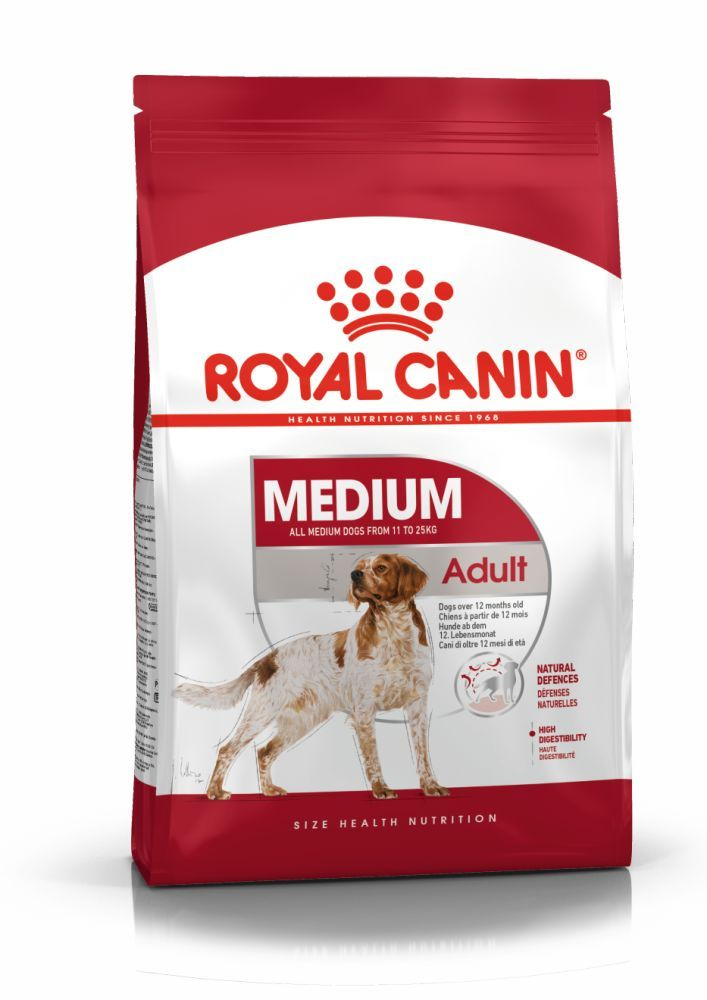
The main nutritional goals for adult Samoyeds are:
Maintaining an ideal body weight by using highly-digestible ingredients and keeping the fat content at a sensible level.
Promoting optimal digestibility with high-quality protein and a balanced supply of dietary fibre.
Helping to preserve the health and beauty of the skin and coat with the enriched addition of essential fatty acids (especially EPA and DHA), essential amino acids, and B vitamins.
To help support their natural defences, a formula enriched with an antioxidant complex and containing mannan-oligosaccharides is recommended.
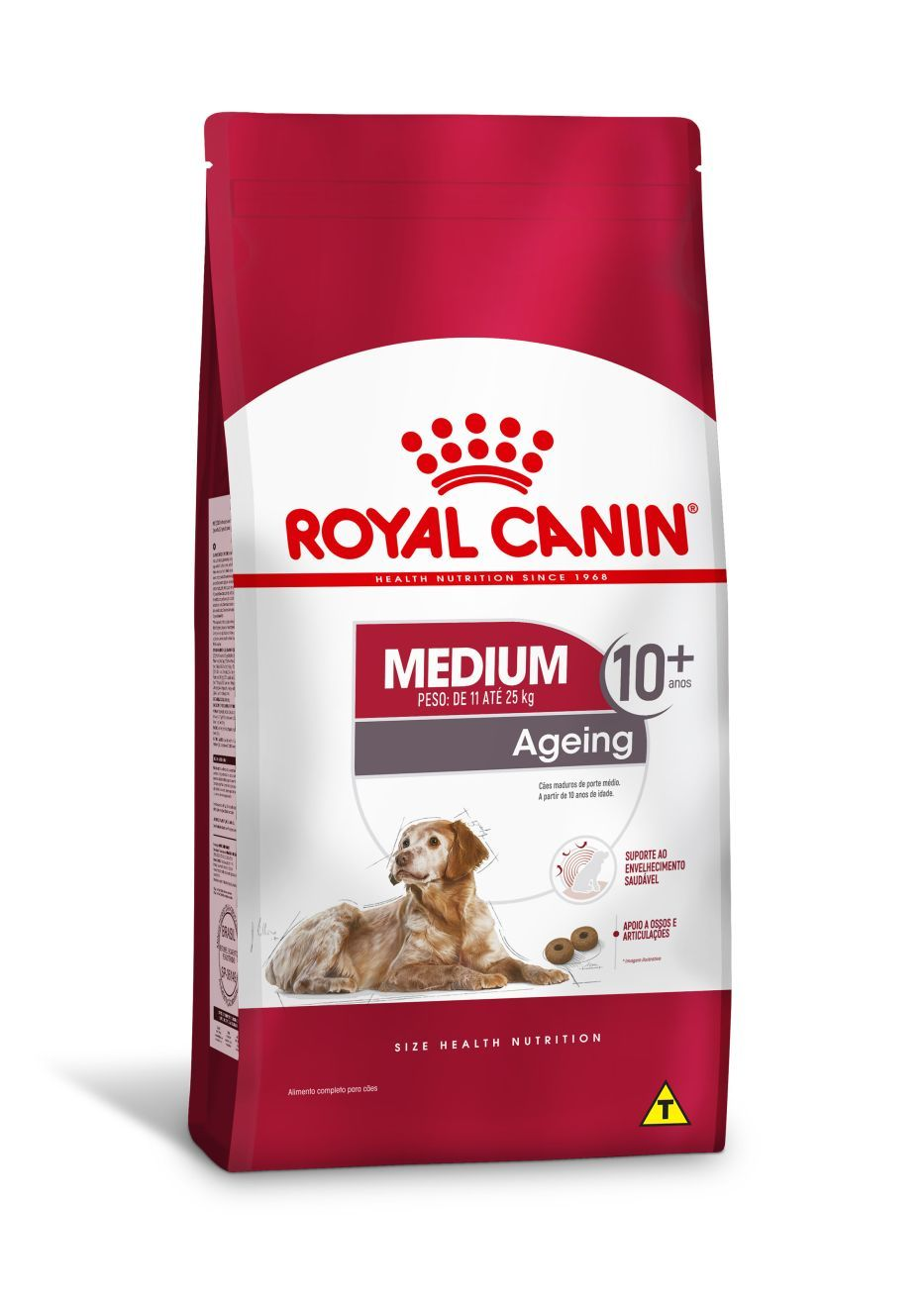
After 7 years old, Samoyeds start facing the first signs of ageing. A formula enriched with antioxidants will help maintain their vitality, and specific nutrients, such as chondroitin and glucosamine, will help maintain healthy bones and joints. Ageing is also accompanied by the modification of digestive capacities and particular nutritional requirements, so food for older Samoyeds should have the following characteristics:
Higher vitamin C and E content. These nutrients have antioxidant properties, helping to protect the body’s cells against the harmful effects of the oxidative stress linked to ageing.
High-quality protein. Contrary to a widely held misconception, lowering the protein content in food brings little benefit in limiting kidney failure. In addition, older dogs are less efficient at using dietary protein than younger dogs. Reducing the phosphorous content is a good way of slowing down the gradual deterioration of kidney function.
A higher proportion of the trace elements iron, copper, zinc, and manganese to help maintain the good condition of the skin and coat.
A higher quantity of polyunsaturated fatty acids to help maintain the quality of the coat. Dogs can normally produce these fatty acids, but ageing can affect this physiological process.
As they age, dogs increasingly suffer from teeth problems. To ensure they continue to eat in sufficient quantities, the shape, size and hardness of their kibble needs to be tailored to their jaw.
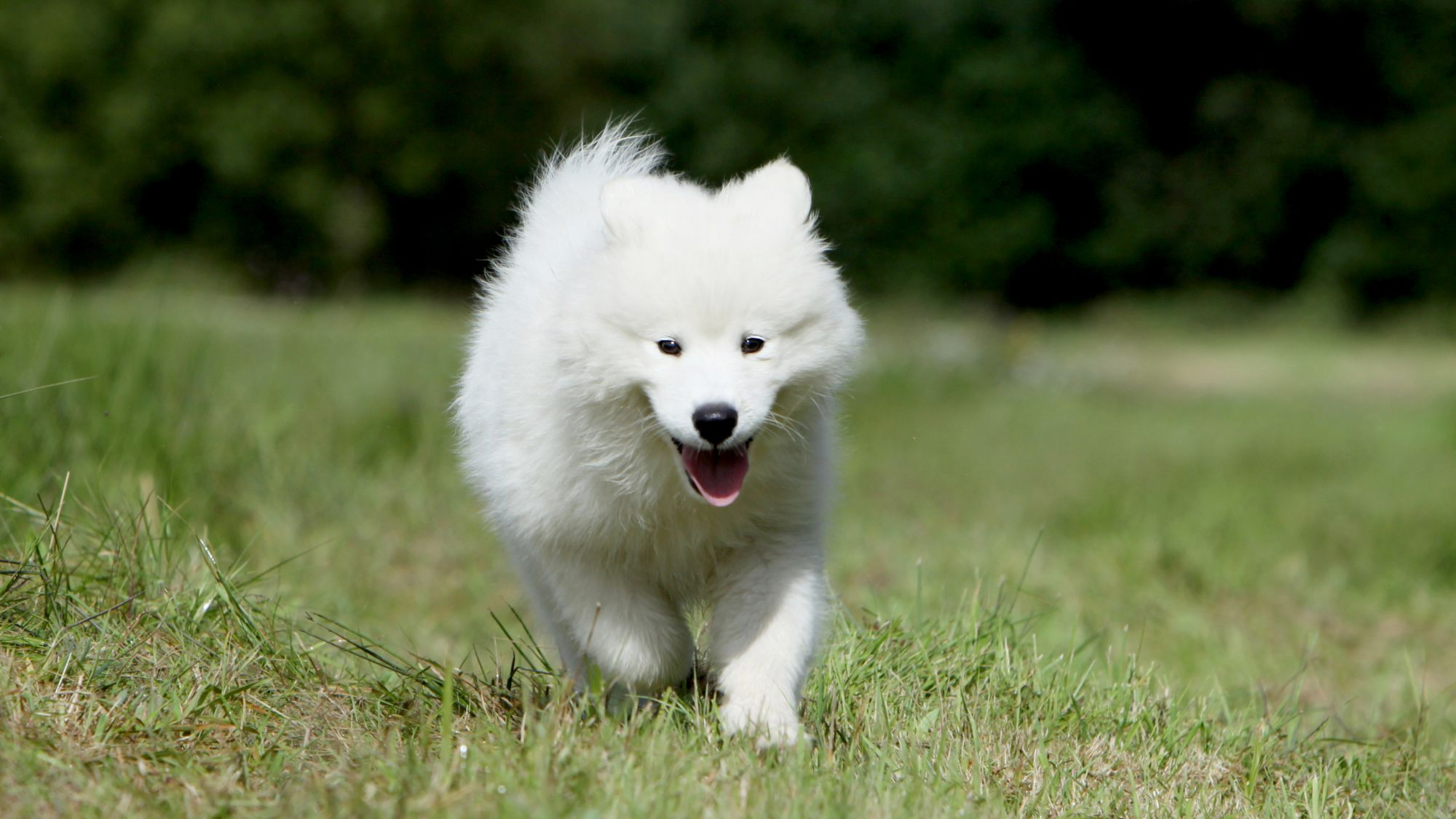
Caring for your Samoyed
Grooming, training and exercise tips
7/7
All about Samoyeds
Given their strong will (did someone say stubborn?) and high attention needs, Samoyeds are not generally recommended for first-time dog owners. The breed is best-suited to someone with more experience training and living with active dogs.
With their dense overcoat and soft, thick undercoat, the Samoyed tends to shed throughout the year—and more so during shedding seasons which occur twice a year. One way to keep the breed’s fur healthy and shiny is by brushing them daily, including their heads and ears (just be gentle!).
Suggested Breeds
Read more on this topic
- Veterinary Centers of America https://vcahospitals.com/;
- Royal Canin Dog Encyclopaedia. Ed 2010 and 2020
- Banfield Pet Hospital https://www.banfield.com/
- Royal Canin BHN Product Book
- American Kennel Club https://www.akc.org/
Like & share this page